A. General Requirements
The minimum standard requirements of SAINS TANAH – Journal of Soil Science and Agroclimatology must be :
- Written in English.
- The length of the submitted paper is at least 6 pages and no more than 12 pages. Editors will be evaluated if the papers are needing more pages than 12 pages.
- Use of a tool such as Zotero, Mendeley, or EndNote for reference management and formatting, and choose APA 6th edition style
- Make sure that your paper is prepared using the SAINS TANAH paper template and upload the Author Declaration Forms as a supplementary file.
- If your article contains map/ maps, please click here for guidance on how to present your map/ maps in the article correctly.
- An acceptable manuscript will meet the following general criteria: it reports a worthwhile contribution to science, the sound methodology was used and is explained in sufficient detail so that other capable scientists could repeat the experiments, conclusions are supported by data, manuscripts is concise, well written, and understandable.
B. Structure of The Manuscript
The manuscript must be prepared and suggested present follow the structure:
- Title: The title of the paper is maxing 10 words, without Acronym or abbreviation
- Abstract: The Abstract has approximately 150-200 WORDS; No citation; State in the abstract a primary objective, research design, methodology, main outcomes, and results, and the conclusions.
- Section structure: Authors are suggested to present their articles in the section structure: Introduction – Materials and Method – Results – Discussion – Acknowledgments (optional) – Conclusion
- References:
- Cite only citations original article in your paper, citation in the citation is not allowed.
- Cite articles from an international reputable peer-review journal with DOI, avoid citing articles in the local language because international audiences cannot recognize them.
- All references should be able for online-tracing, any private collection which cannot be tracked on the internet is not valid.
- Use new references from the recent 10 years back since the paper is submitted. Old references are allowed only for specific subjects with rare references, maximum only 10% of all references.
- Expect a minimum of 15 references primarily with a minimum of 80% to journal papers.
- The manuscript should be typed in a single column
C. Types of Paper (updated on January 30, 2019)
- Original research papers (Regular Papers): these should report the results of the original research. The material should not have been previously published elsewhere, except in a preliminary form.
- Review articles: these are peer-reviewed and can be invited as well as submitted. Topics should cover subjects falling within the scope of the journal. Reviews (which can include meta-analyses) should provide significant new syntheses and insights rather than summarizing the literature. Based on a combination of well-selected previous publications, reasoned arguments and analyses, these papers should identify research directions for the future. It is advisable to check with one of the Editors before submitting whether the topic is of interest for SAINS TANAH. The format generally follows that of regular papers.
- Short Communication: These are peer-reviewed and present original research that is less suitable for a regular paper because they are based on a relatively limited dataset. They typically describe relatively small experiments or studies that nevertheless provide interesting new insights. They should not exceed three printed pages, including references, tables, and figures. Within these constraints, a maximum of 1500 words; 2 figures/tables; and 15 references are allowed. The bulk of the text should be written in continuous form (no subsections). However, a cover page, (short) abstract and a list of Keywords are required; acknowledgements and references are allowed. In other respects, the format guidelines for Regular Papers should be followed.
Submission Preparation Checklist
As part of the submission process, authors are required to check off their submission’s compliance with all of the following items, and submissions may be returned to authors that do not adhere to these guidelines.
- All authors have significantly contributed to the research. All authors are obliged to provide retractions or corrections of mistakes, in case of detection.
- The submission has not been previously published, nor is it before another journal for consideration (or an explanation has been provided in Comments to the Editor).
- The submission file is in OpenOffice, Microsoft Word, RTF, or WordPerfect document file format.
- Where available, URLs for the references have been provided.
- The text adheres to the stylistic and bibliographic requirements outlined in the Author Guidelines, which is found in About the Journal.
- If submitting to a peer-reviewed section of the journal, the instructions in Ensuring a Blind Review have been followed.
Copyright Notice
Authors who publish with this journal agree to the following terms:
- Authors retain copyright and grant the journal right of first publication with the work simultaneously licensed under a Creative Commons Attribution-NonCommercial License that allows others to Share (copy and redistribute the material in any medium or format) and Adapt (remix, transform, and build upon the material) the work non-commercially with an acknowledgement of the work’s authorship and initial publication in this journal.
- Authors are able to enter into separate, additional contractual arrangements for the non-exclusive distribution of the journal’s published version of the work (e.g., post it to an institutional repository or publish it in a book), with an acknowledgement of its initial publication in this journal.
- Authors are permitted and encouraged to post their work online (e.g., in institutional repositories or on their website) prior to and during the submission process, as it can lead to productive exchanges, as well as earlier and greater citation of published work (See The Effect of Open Access).
Privacy Statement
The names and email addresses entered in this journal site will be used exclusively for the stated purposes of this journal and will not be made available for any other purpose or to any other party.

